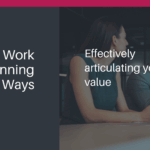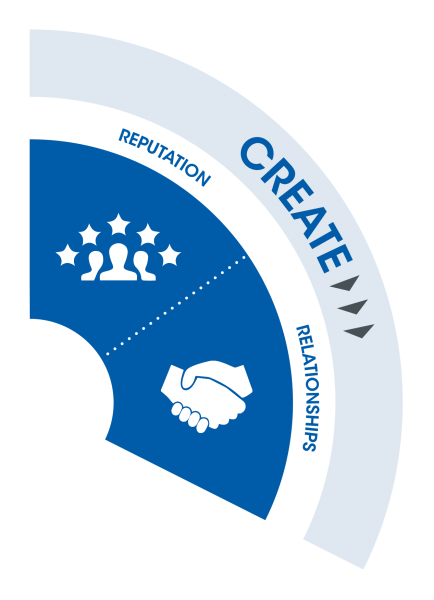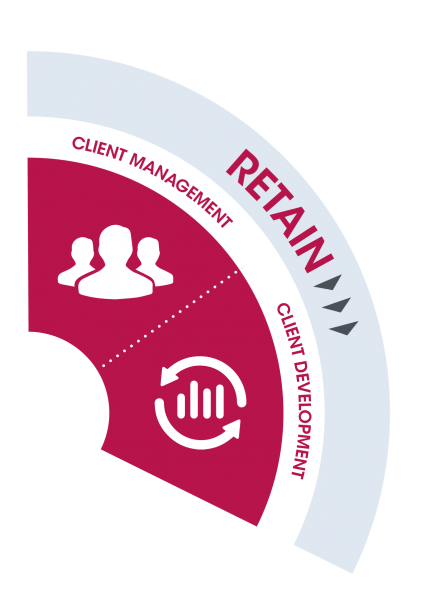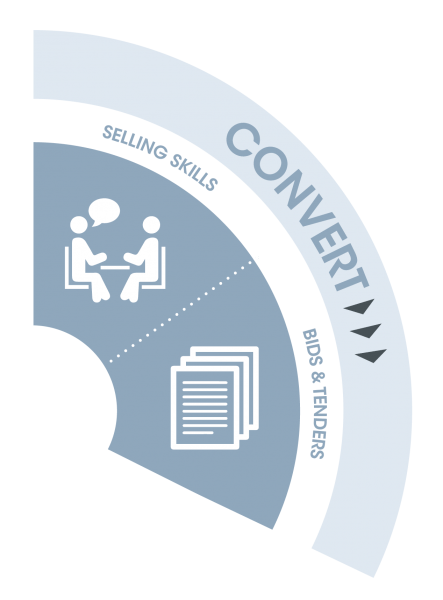We’re continuing our series on ‘5 Simple ways to achieve greater BD success’, and this month, we’re focusing on a fundamental truth: Business Development is about relationships! Clients don’t just choose service providers; they choose trusted partners. And trust isn’t built overnight. It’s developed through consistent, value-driven interactions that demonstrate reliability, expertise, and genuine interest in their success.
But building strong client relationships doesn’t mean simply ‘staying in touch’ or sending the occasional email. The best BD professionals cultivate trust with intention, ensuring that every interaction strengthens the connection rather than just maintaining it.
So, how do you do that? Here are my thoughts:
1. Show up consistently (even when there’s no immediate need)
Many professionals fall into the trap of only engaging with clients when they need something – whether that’s a meeting, a proposal, or a project update. But strong relationships aren’t built on sporadic interactions; they’re built through consistent presence. So may I suggest that you:
- Check in when there’s no agenda – A quick “How’s business going?” or “I saw this and thought of you” message keeps the relationship warm.
- Are seen in the right places – Whether that’s industry events, LinkedIn discussions, or informal networking, regular visibility reinforces your presence in their professional world.
- Stay in their ‘thinking zone’ – If your client hears about an industry shift, do they think of you as someone who could help? That level of relevance comes from frequent, meaningful interactions.
2. Offer value without expecting an immediate return
Great BD isn’t just about winning work – it’s about being helpful in ways that ensure you are ‘front of mind’ when the time is right. So how about:
- Making introductions – Connecting a client to a useful contact, mentor, or potential referrer strengthens both your relationship with them and your broader network.
- Share relevant insights – This could be a well-chosen industry article, a market trend report, or even a personal observation based on your experience. The key is tailoring what you share – make it specific to their world, not just generic news.
- Provide quick, no-strings-attached advice – If a client asks you a small question, answer it freely. This isn’t about doing something for nothing, if they respect you they will not abuse this, but the more they see you as a ‘go-to’ source of value, the stronger the trust becomes.
3. Demonstrate reliability in the smallest details
Trust isn’t just about big moments; it’s built (or eroded) through everyday interactions. Clients notice the small things – whether that’s how quickly you respond, how well you follow up, or whether you deliver on time.
- Be the person who follows through – If you say you’ll send something, do it. If you promise a check-in, make sure it happens. Small, consistent reliability builds huge trust over time. It’s amazing how many people don’t do what they say they are going to do, use the many tools around you to set the appropriate reminders.
- Respect their time – Clients are busy. Being prompt, prepared, and clear in meetings or emails reinforces that you value their time.
- Keep your promises (even the informal ones) – A casual “I’ll introduce you to X” or “I’ll share that article” is still a promise. Honour even the smallest commitments.
4. Build deeper understanding of their challenges
Clients don’t just want a service; they want an advisor who ‘gets’ them. That means going beyond transactional conversations to truly understanding their world.
- Ask about their biggest business priorities – What’s worrying them? What’s their biggest opportunity this year? The better you understand their landscape, the more valuable your input becomes. Make notes of these and check in about them in future conversations.
- Pick up on what’s unsaid – Clients won’t always tell you their challenges outright. Pay attention to frustrations, recurring themes, and what they’re not talking about – these often reveal where they need help the most.
- Position your expertise in their context – Rather than talking about what you do in isolation, relate it directly to their business and their goals. For example, If you’re an employment lawyer, instead of saying, “We specialise in employment law and compliance,” you might say, “With all the recent changes in employment law, a lot of businesses are rethinking their policies to stay ahead. Happy to chat if you ever want to bounce around ideas.”
5. Keep the relationship going between projects
One of the biggest BD mistakes is treating client relationships as transactional – focusing only on the work at hand. The strongest professional relationships extend beyond the project cycle and create mutually beneficial relationships for many, many years.
- Check in post-project – Don’t just move on once a piece of work is done. Follow up, ask how things are going, and look for opportunities to support them further.
- Make staying in touch feel natural – If every interaction feels like a sales call, clients will disengage. Instead, maintain contact through shared interests, industry discussions, or offering help where it’s useful.
- Invest in the long game – Not every conversation leads to immediate work, but relationships built over time often lead to opportunities when you least expect them.
Final thought: Trust is built over time, not transactions
Clients choose professionals they know, like, and trust. The best way to win work isn’t through hard selling, but through long-term relationship-building. That means showing up, being valuable, and proving your reliability – consistently.
So, as you think about your BD approach this year, ask yourself:
What’s one small action you can take this week to strengthen a key client relationship?
Next month, we’ll dive into ‘Effective Communication: Articulating your value’, and explore how to translate technical knowledge into compelling, client-focused messaging so clients fully understand (and appreciate!) the impact you bring.
Until next time,





 We are a business development consultancy which is passionate about helping our clients develop processes, skills and behaviours that will result in increased sales and improved margins.
We are a business development consultancy which is passionate about helping our clients develop processes, skills and behaviours that will result in increased sales and improved margins. 

